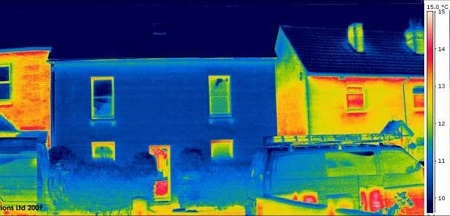 Friday, September 27, 2024
Friday, September 27, 2024  Friday, September 27, 2024
Friday, September 27, 2024 
If you don’t know what a ‘Passive House’ is you’re in good company, most people haven’t. Passive Houses are essentially buildings which use very little energy for heating and cooling, whilst also providing a high level of comfort. If I were to describe Passive Houses in a few words it would be ‘Exceptionally energy efficient, virtually airtight houses’. The houses are so energy efficient they can save up to 90% in heating costs. One of the main focal points of Passive Houses is minimizing air leakage from the property. In fact, for a house to be certified, ‘the building must not leak more air than 0.6 times the house volume per hour’. The houses implement the latest in insulation technology, triple-glazed windows, balanced energy recovery ventilation and limiting thermal bridging, being heated mostly using ‘passive’ energy from electrical equipment, people and passive solar gains.
The concept of Passive Houses (‘Passivhaus’ in German) was pioneered by Bo Adamson of Lund University, Sweden, and Wolfgang Feist of the Institute for Housing and the Environment, Germany. The Passivhaus Institute has created a set of quality criteria a household must meet in order for the building to be officially labelled a Passivhaus. The property will then be tested and officially certified if it meets the exact quality assurances necessary. There are 15 to 20 thousand of these houses in the world at the moment and below is a breakdown of what it’s all about and thus, the reasons why the future will be engulfed by this trend and why it makes sense to engineer something similar and jump on the green bandwagon yourselves.
It’s been growing in momentum for years; and with huge financial backings and government propaganda (cross out) promotion. Whether you believe global warming or not, or whether you believe climate change is influenced by humans (carbon emissions), it doesn’t matter. A huge juggernaut, a new religion one might say, has started moving and it will take something massive to change the momentum it has.
When the G8 met in 2009 to discuss global emission cuts, they set the target to slash global emissions 80% by 2050. India and China did not agree to this as it would mean stifling their economic growth. According to the U.S. Energy Information Administration buildings can account for 48% of annual greenhouse gas emissions; that’s nearly half of total emission production. Most people look at vehicles on the road and factories billowing smoke, yet do not think that what they do in their own homes has a significant impact; well, it does.
Keep reading this blog on freshome.com
Deadline for this week in Friday at noon
Join Construction Links Network